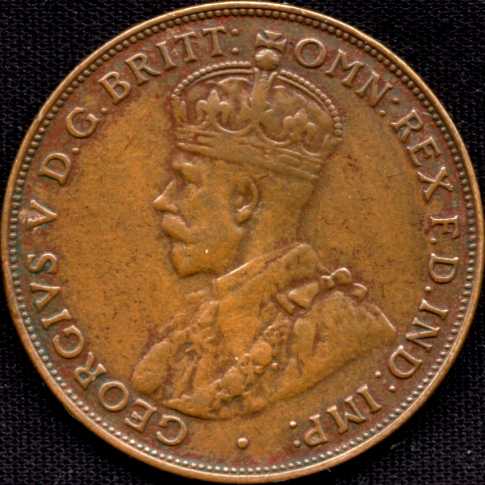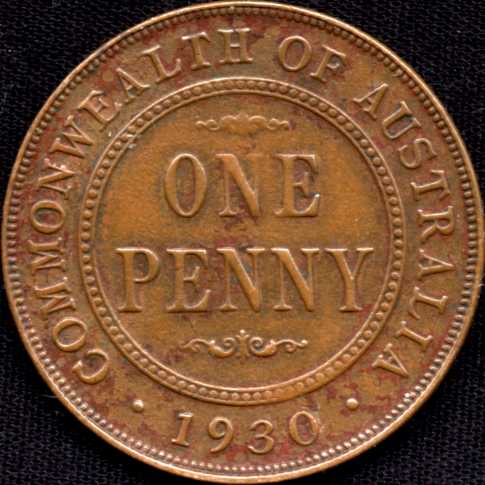

|
|
The 1930 penny is probably the most famous of all the Australian Commonwealth
coins. Its existence was not known for some time after the coin was released into
circulation.
According to an article7
titled "Notes on Australian Pre-decimal Coinage" by Bill Mullett published
in the 1996 Journal of the Australian Numismatic Society, "The now famous 1930
penny was the result of experimental work undertaken to produce better pennies for
the 1930s". No pennies were ordered by the Treasury for 1930. The 1931 order
did not specify a date to appear on the coins and so the good coins from the 1930
experimental work were available for distribution with the 1931 mint issue.
It is not known how many 1930 pennies were struck. Estimates vary from around
2,000 to 10,000 with about 3,000 being the most commonly quoted figure. About 1,500
coins are being traded in the marketplace.
The fame of this coin is responsible for its high price. A 1930 penny in VF condition
will fetch something close to $30,000 whereas an uncirculated 5/- Internment Camps
token of which maybe 80 specimens exist, might fetch less than a tenth of that price.
 |
Obverse of the 1930 penny. Most 1930 pennies seem to have been struck using the
Calcutta die but there are reports of specimens minted
with the London die (see note below). |
 |
Reverse of the 1930 penny (type A [London], 174 rim
denticles) |
|
Several of these have been offered for sale recently (1999-2001) at prices ranging
up to $100. They are obviously not intended to fool collectors. |
Although the silver coin could not fool a collector, there is the possibility
that someone might copper plate one of these things and try to pass it off as genuine.
Things to look for:
|
1 |
The coin is heavier than normal - 10.4g instead of 9.7g. | |
|
2 |
The coin is cast rather than struck. (Plating might conceal that.) | |
|
3 |
The zero in the date leans strongly to the left whereas in the genuine coins the
zero is more upright. | |
|
4 |
The obverse was made from a model struck with the London die (177 denticles) whereas
nearly all 1930 pennies were struck with the Calcutta die (178 denticles). | |
|
5 |
The reverse was made from a model struck with the Birmingham die (177 denticles)
whereas all genuine 1930 pennies were struck with the London reverse die (174 denticles). |
The table above gives hints for detecting 1930 penny forgeries in general and
should be good enough to pick any forgery made by altering the date on an existing
coin. Although a check for the obverse die is well known, the reverse die is of
similar importance and is often overlooked.
The 1930 penny variety with the London obverse was first reported by John Beck
in Australian Coin Review, August 1966 after authentication by the Royal Australian
Mint. The value of the authentication by the RAM is dubious since it did not even
mention the reverse die. We should be sceptical of the authenticity of this coin
but we cannot dismiss it outright because the pictures in the magazine are clear
enough to identify the London reverse die as well as the obverse. I'm going to
reserve judgement until such time as I see a specimen.